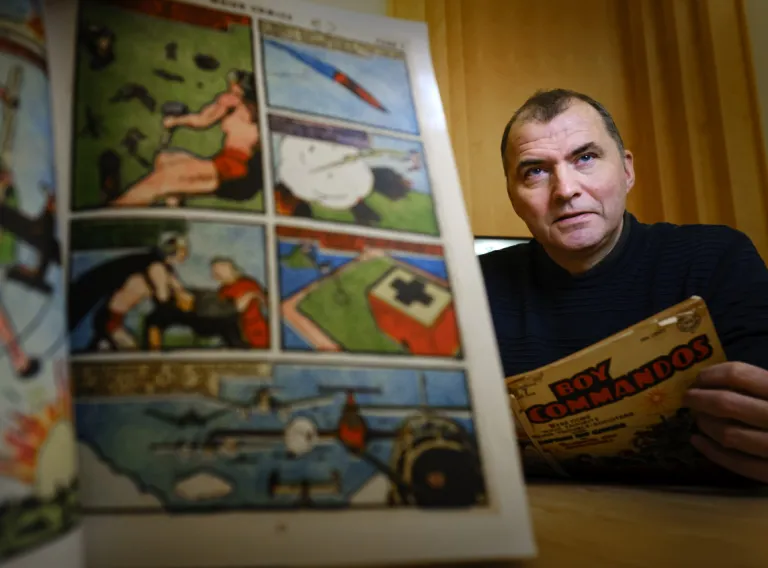
Jón Karl Helgason, professor at the University of Iceland Faculty of Icelandic and Comparative Cultural Studies
When we think of the Norse gods in Valhalla, the thunder god Thor is first among equals. Thor owns the hammer Mjölnir, using it to defeat frost giants and defending Asgard from their impending invasion. According to the Poetic Edda and the Prose Edda, Thor is actually a typical superhero and it is therefore no wonder that the American comic and film industries should have embraced him and brought him to a global audience.
But when and how did this process begin? It is an apposite question, now that Thor, or The Mighty Thor, has become one of the most popular superheroes of our time in the hands of film makers at Marvel Entertainment in the USA. Jón Karl Helgason, professor at the University of Iceland Faculty of Icelandic and Comparative Cultural Studies, has in recent years participated in a research project seeking to answer these questions.
Clear links between the mythology and the comics
"I have long been interested in how Norse mythology became part of international popular culture, whether in the USA, Europe or Asia," says Jón Karl. In 2017 he published the book Echoes of Valhalla, which discusses the legacy of ancient Icelandic literature in films, music, theatre, travel books and comics. For example, he discusses the Danish Valhalla comic series, attributed to the artist Peter Madsen, and the American comics about The Mighty Thor, which Marvel began to publish in 1962. The main authors of the oldest comics were Stan Lee, Jack Kirby and Larry Liber.
"In my book, I explained how the first comics about The Mighty Thor were not only inspired by Norse mythology, but also half a dozen comics about Thor that were published in the USA between 1940 and 1959. It is interesting that Jack Kirby was involved in the creation of most of these," says Jón Karl. "I also realised that most of the main comic book authors in the process were really just boys during the Second World War when this development began and that their original interest in Thor was probably related to grave concerns about the rise of the Nazis in Germany and even fear of a potential invasion of the USA."
Vinland on the Brain
Following the publication of Echoes of Valhalla, Jón Karl has organised a conference here in Iceland about the impact of the medieval age in Iceland on Japanese comic book authors and participated in a multinational research project by a large group of scholars, aiming to explore the reception of ancient Icelandic literature in North America. The main organiser of this project, originally titled 'Vinland on the Brain', is Tim Machan, professor at the Department of English at the University of Notre Dame in South Bend, USA. He has also conducted a range of research into the legacy of Icelandic medieval literature in Europe and is now adding the finishing touches to a book on the subject, entitled Northern memories and the English Middle Ages.
"In the autumn of 2018, our team had an informative meeting in South Bend and over the last year, Tim and I, with the help of my PhD student Zachary Melton, have been finalising a collection of articles on the subject. They will be published by the University of Manchester Press this April, under the title From Iceland to the Americas. Vinland and historical imagination. The many fascinating articles in the book include Emily Lethbridge's overview of American travel writers who visited Iceland in the 19th century, Heather O'Donoghue's analysis of Neil Gaiman's interpretation of Norse mythology in his novel American Gods, and Verena Höfig's article about Vinland and racist extremism in the USA. Tim himself contributes a weighty introductory chapter with a historical discussion of the legacy of ancient Norse culture in North and South America. Other contributing authors, besides myself, are Bergur Þorgeirsson, Kevin J. Harty, Amy C. Mulligan, Simon Halink, Angela Sorby, Seth Lerer, Matthew Scribner and Dustin Gerhard."



